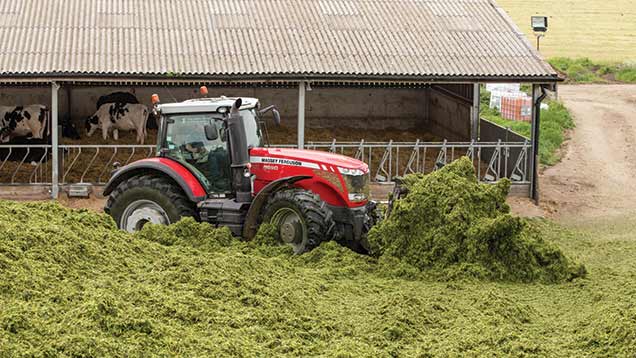8 top tips to prevent aerobic spoilage in your silage
 © Tim Scrivener
© Tim Scrivener Aerobic spoilage or silage heating is estimated to cost the livestock industry about £150 million per year. Silage Solutions’ Dave Davies discusses how to avoid such losses.
Silage fermentation quality has improved dramatically over the decades, with levels of the undesirable products ammonia-N and butyric acids reducing.
See also: Silage management academy
As a result these silages have a much sweeter smell, combined with greater palatability and intake, says Dave Davies of Silage Solutions.
However, these better quality silages not only have the potential to improve animal performance, but can also increase the risk of aerobic spoilage, he warns.
“The extra nutrients, while good for the rumen bacteria, are also a source of energy for the yeasts that start the process of aerobic spoilage on the clamp face,” says Dr Davies.
He believes the most cost-effective way of preventing spoilage is by good clamp management both during filling and feed-out.
Dr Davies’ eight-point plan for good clamp management:
- Prepare the clamp well, use side sheets.
- Ensure the forage is spread in even layers in the pit, no more than 15cm deep and consolidate as you go. Most farms need two tractors on the pit, and it is money well spent.
- Ensure the packing tractors have narrow wheels. Wide wheels are used to reduce soil compaction; you want maximum compaction.
- Ensure chop length is adapted to crop dry matter (DM) – 10cm for forages below 22% DM, 2.5cm for 32% DM.
- When packing, try and fill the sides at a 30deg angle to the side-wall to improve compaction in this vulnerable zone and reduce the problems of shoulder and wall waste at feed-out.
- When finished, seal quickly but well. Ideally use a thin oxygen barrier sheet on top, then pull the side sheets over and finally the top sheet.
- Use sand bags touching along the walls, this improves the seal and always ensure there is top weight all over, the more the better. You are trying to trap the carbon dioxide produced.
- Carbon dioxide is a free silage additive. It reduces the growth of yeasts and moulds in the first few days of storage, the better you seal the clamp the more is trapped, reducing the growth of these undesirable microbes.
If you find that you still have a problem year-in, year-out and you are doing everything that is recommended here, then an additive may be the solution.
See also: Save silage and make the most of cheap cereals
Choosing an additive
When choosing an additive it is important not to compromise aerobic stability, says Volac’s Shirley Heron.
“Poor quality silage never heats. Chemical preservatives, such as salts of sorbate or benzoate, are well proven inhibitors of yeasts and moulds that start the aerobic spoilage process, however, there are now biological alternatives that work by converting lactic acid to acetic acid which is inhibitory to yeasts.
While this increases fermentation dry matter losses slightly, the potential savings on reduced aerobic spoilage dry matter losses should more than outweigh these.”
